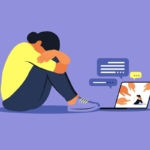Essential Online Safety Tips for Teens
In today’s hyper-connected world, teenagers are more active online than ever before—whether it’s social media, gaming, streaming, or simply browsing. While the internet offers countless opportunities for learning, entertainment, and socializing, it also comes with risks that can compromise privacy, security, and even personal well-being. Understanding online safety is crucial to navigating the digital world responsibly. Here’s everything teens need to know about staying safe online.
Protecting Personal Information
The internet is a vast space where personal data can be easily exploited if not handled correctly. Teens often share details about their lives on social media, unaware of how this information might be used.
- Limit Personal Sharing: Avoid sharing personal details such as your full name, home address, school name, or phone number in public posts or forums.
- Use Strong Passwords: A strong password should be unique, long, and include a mix of uppercase and lowercase letters, numbers, and symbols. Consider using a password manager to keep track of credentials.
- Enable Two-Factor Authentication (2FA): This adds an extra layer of security, ensuring that even if someone gets your password, they still need a verification code to access your account.
- Be Mindful of Metadata: Photos and videos often contain location data. Before posting, disable location tagging and remove metadata that could reveal your whereabouts.
Understanding Digital Footprint
Everything you do online leaves a trace—this is called a digital footprint. It includes social media activity, browsing history, comments, and even deleted posts that might still exist in backups or screenshots.
- Think Before You Post: Once something is online, it can be nearly impossible to remove. Avoid sharing anything that could be used against you in the future.
- Manage Privacy Settings: Regularly update your privacy settings on social media to control who sees your content. Most platforms allow you to restrict access to friends only.
- Delete Old Accounts: Unused social media or email accounts can be a security risk. If you no longer use a platform, delete your account permanently.
Recognizing and Preventing Cyberbullying
Cyberbullying is a serious issue that affects many teens. It can take the form of harassment, doxxing (sharing private information without consent), impersonation, or spreading false rumors.
- Don’t Engage with Bullies: Responding to cyberbullies can escalate the situation. Instead, block and report them on the platform.
- Keep Evidence: Take screenshots of harmful messages in case you need to report them to school authorities, parents, or law enforcement.
- Speak Up: If you’re being targeted, talk to a trusted adult. Schools and social media platforms have policies in place to handle cyberbullying.
Safe Social Media Practices
Social media is a fun way to connect with friends, but it can also be a breeding ground for scams, predators, and misinformation.
- Avoid Accepting Requests from Strangers: Not everyone online is who they claim to be. Only connect with people you know personally.
- Be Skeptical of Viral Trends: Some challenges or trends can be harmful or illegal. Research before participating.
- Verify Information Before Sharing: Misinformation spreads quickly. Before reposting something, check if it’s from a reliable source.
Spotting and Avoiding Online Scams
Online scams target teens through fake giveaways, phishing emails, and too-good-to-be-true job offers.
- Watch Out for Phishing: Phishing scams trick users into revealing passwords or financial information. Always verify emails before clicking links.
- Avoid Freebies That Require Personal Data: If a website asks for excessive personal details in exchange for a free product, it’s likely a scam.
- Use Secure Payment Methods: When making online purchases, use trusted payment services like PayPal instead of debit cards.
Online Gaming Safety
Online gaming communities can be fun but also risky, with issues like cyberbullying, data theft, and even predatory behavior.
- Use Anonymous Usernames: Avoid usernames that reveal personal details.
- Be Cautious in Voice Chats: Some players use voice chats to harass or manipulate others. If this happens, mute or report them.
- Limit In-Game Purchases: Many games have microtransactions that can lead to excessive spending. Set up parental controls if necessary.
Protecting Devices from Hacking and Malware
Teens often install multiple apps, visit various websites, and connect to public Wi-Fi, which increases exposure to cyber threats.
- Use Antivirus Software: Keep antivirus software updated to protect against malware and spyware.
- Avoid Public Wi-Fi for Sensitive Tasks: Public networks are not secure. Avoid logging into important accounts on free Wi-Fi.
- Update Software Regularly: Always install the latest updates for apps, browsers, and operating systems to patch security vulnerabilities.
Balancing Screen Time for Mental Well-being
Spending excessive time online can negatively impact mental health, sleep, and real-life interactions.
- Set Screen Time Limits: Apps like Instagram and TikTok allow you to monitor and limit daily usage.
- Take Digital Detox Breaks: Designate tech-free hours to engage in offline hobbies, exercise, or spend time with family.
- Recognize Signs of Digital Fatigue: If you feel anxious, stressed, or unproductive due to excessive screen time, it’s time to reassess your online habits.
Final Thoughts
Navigating the internet safely requires awareness, responsibility, and smart digital habits. By following these online safety tips, teens can protect themselves from cyber threats while enjoying the benefits of the digital world. The key takeaway? Be mindful, stay informed, and think twice before sharing anything online. Remember, your digital safety is in your hands.




Leave a Reply
Want to join the discussion?Feel free to contribute!